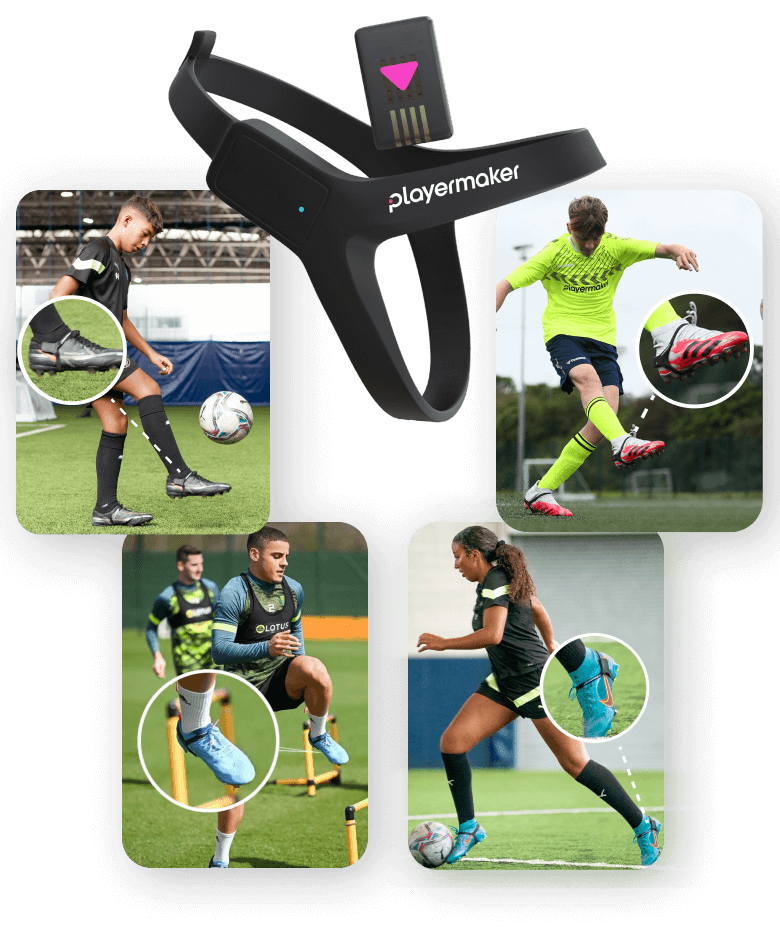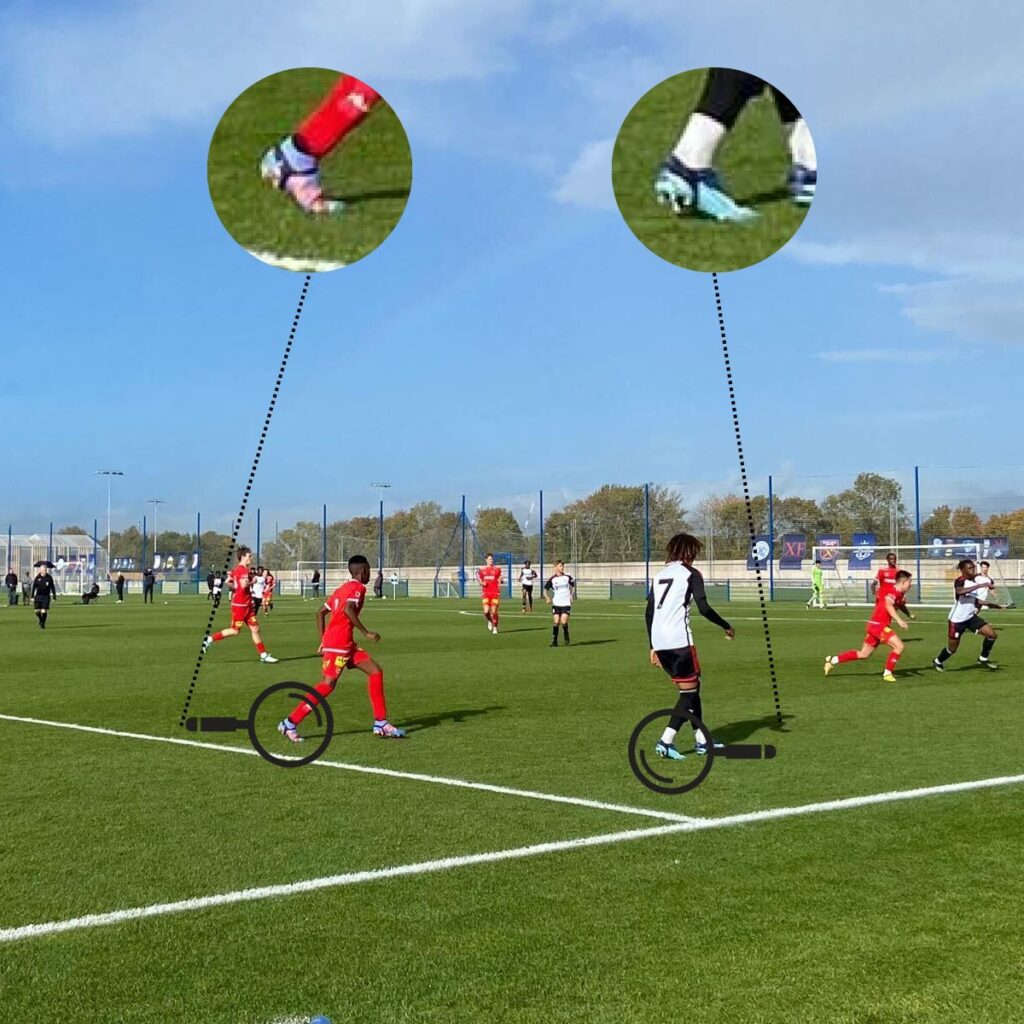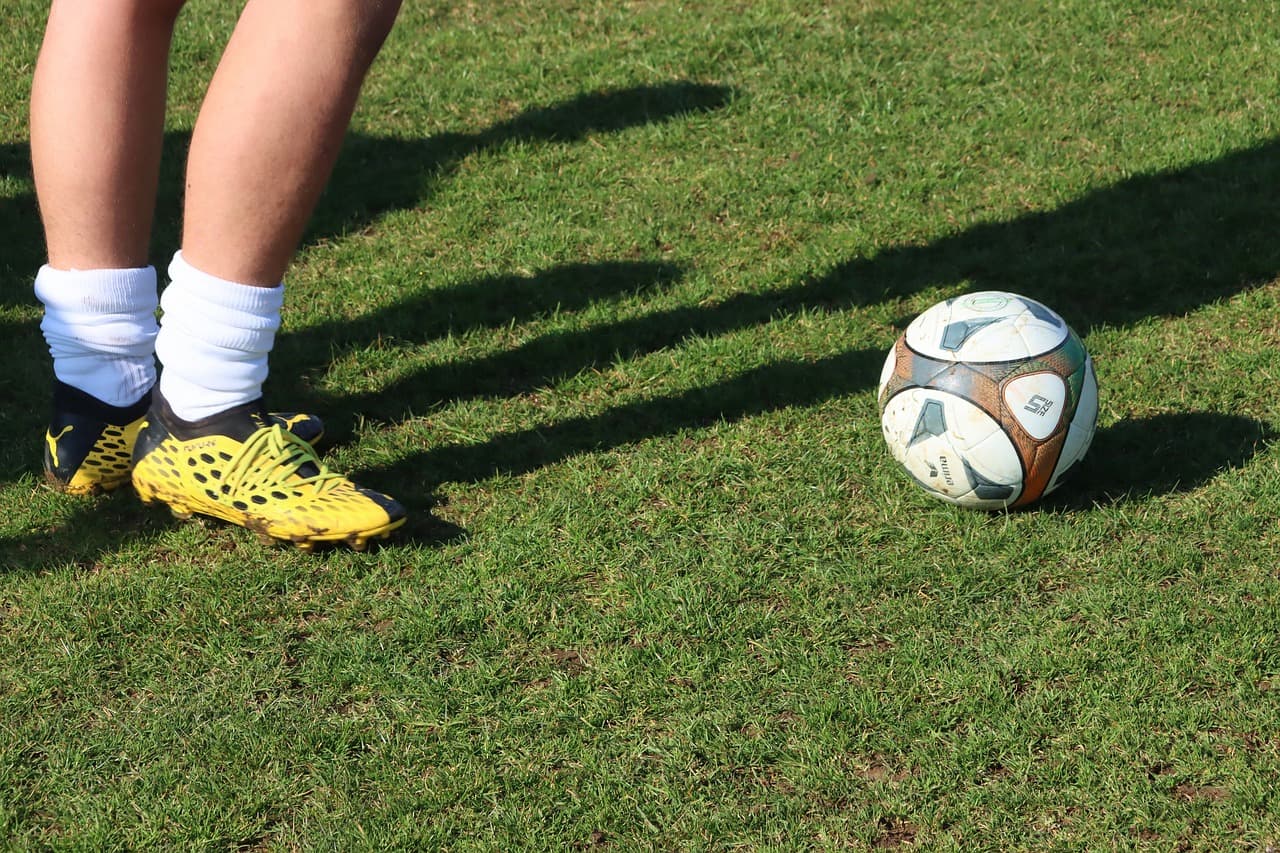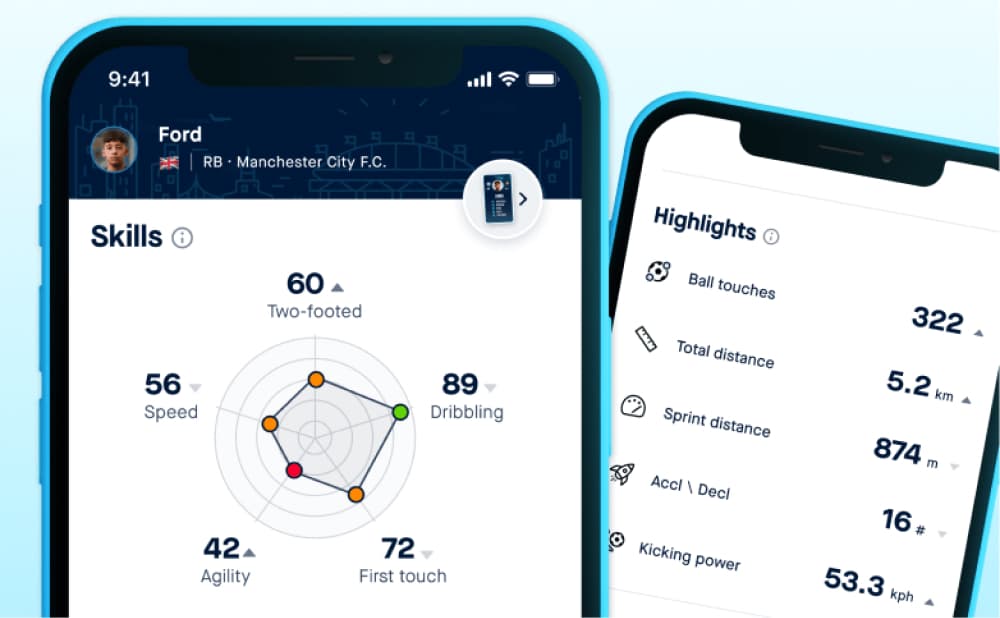Playermaker revolutionises youth football training by offering valuable insights into player performance and enabling tailored coaching interventions. Through innovative features like tracking ball touches, leg usage, and time on the ball, Playermaker provides coaches with a deep understanding of each academy player’s strengths and areas for improvement. Let’s delve into how Playermaker benefits youth football players of different age groups:
U-9 to U-11: Building Foundations (Loving and Playing)
At this age, the emphasis is on fostering a love for the game while developing basic, fundamental skills. Playermaker’s ability to quantify ball touches and leg usage allows coaches to tailor practice strategies while maximising player engagement and creativity, while keeping it light, ensuring the love for the sport is derived from fun and a good experience. This time is also great to report back with parents on how their child is performing, providing feedback in order to build a stronger player for the years following.
U-12 to U-14: Nurturing Individual Growth within the Team (Learning and Training)
Playermaker becomes a valuable tool for individualised development as players transition into more structured training environments. Coaches can use technical data, such as leg usage, passing, ball touches and involvement strategies, to identify each player’s role within the team and tailor training sessions accordingly. Physical data provided by Playermaker, including workload benchmarks, helps optimise training loads and minimise the risk of injury. Coaches can communicate specific areas of focus, such as improving proficiency with the left or right foot, to players. By framing feedback in a constructive and goal-oriented manner, clubs can encourage players to accelerate their development in targeted areas subconsciously. When a player is told what to focus their improvement on, they will begin to automatically do so, especially if they know they are being digitally monitored. This approach fosters a growth mindset among young players, empowering them to take ownership of their development journey and strive for continuous improvement.
“With a product like Playermaker were able to link both the physical and the technical. It just allows us to get that holistic overview of the player’s performance in training and games.”
Mike Cave, Academy Director, Fulham FC
U-18 to U-23: Pursuing Excellence and Pathway Progression (Winning)
In the pursuit of excellence, Playermaker offers advanced features to support player progression towards the first team. Contextualised data, such as kick velocity and correlation of technical/physical metrics, enables coaches to fine-tune training programmes and enhance performance on the pitch. Playermaker also facilitates the possibilities of individual learning plans, tracking progress towards specific targets and informing pathway progression decisions.
Photo captured of both our clients, Lillestrøm Sportsklubb and Fulham Football Club playing at the 2023 Heston International Cup U16.
Bridging the Gap: Coach Education and Continuous
Improvement While Playermaker provides valuable insights into player performance, its effectiveness ultimately relies on the coach’s ability to interpret and apply the data effectively, especially when dealing with youth. Coaches must understand that numbers alone do not guarantee success; it is the coach’s role to translate data into actionable strategies that support player development. By embracing Playermaker principles, coaches can use Playermaker to track progress, evaluate strategies, and ensure that the club remains on the right path towards achieving its goals.
In the modern era of youth football development, nurturing talent and optimising performance at a young age is the key to success. By leveraging these insights and age-appropriate coaching methodologies, clubs can create an environment where players thrive, excel, and ultimately realise their full potential on and off the field.
Interested in learning more about how Playermaker helps Football Clubs optimise technical, tactical, and physical capabilities?










